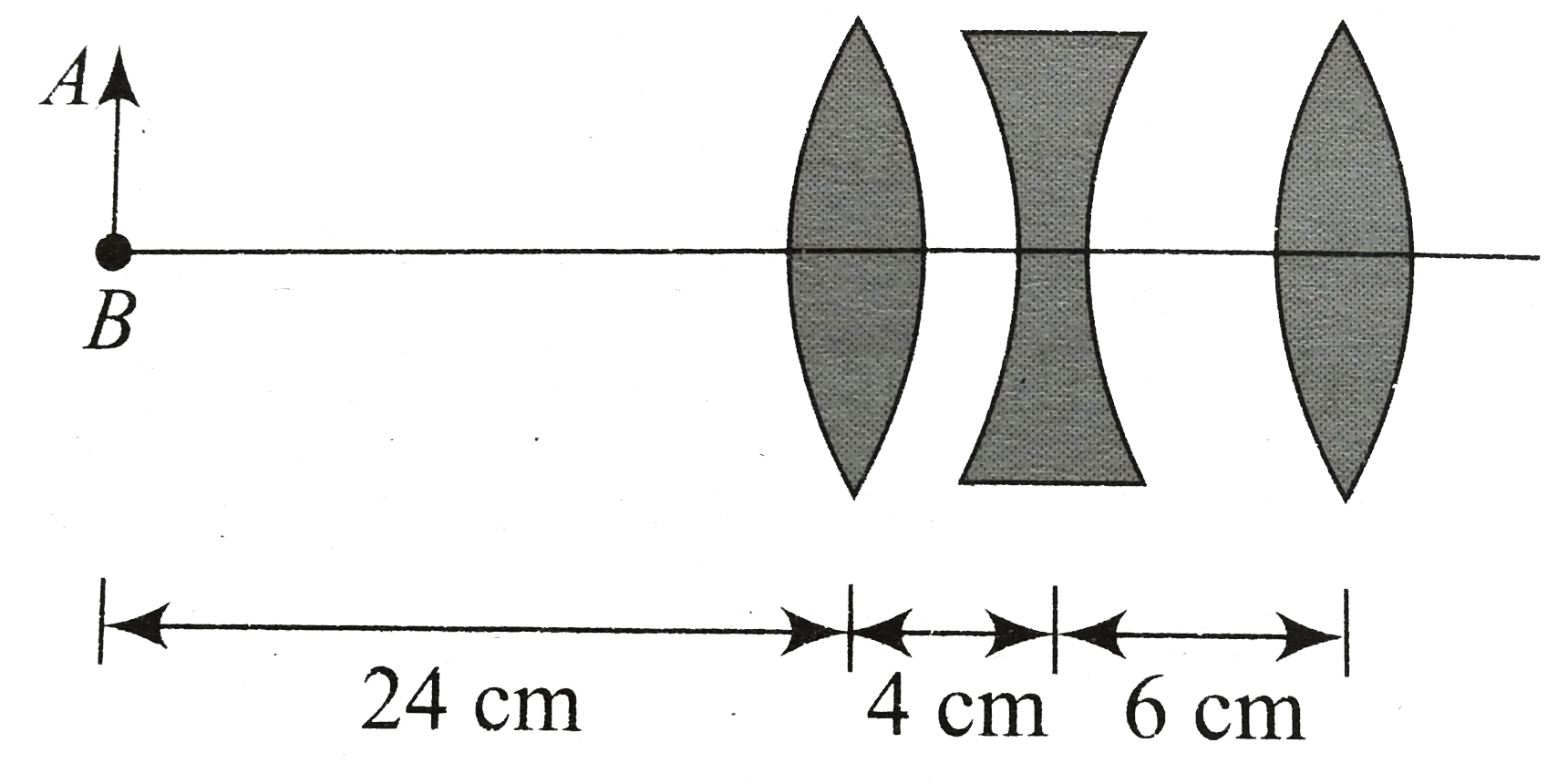Action of the first lens:
Focal length `= (1)/(16.66)=0.06m =6cm`
`u=-24cm`
Using `(1)/(v)-(1)/(u)=(1)/(f)`
`(1)/(v)+(1)/(24)=(1)/(6)`
`(1)/(v)=(1)/(6)-(1)/(24) or v=8 cm`
This image would be real and inverted (with respect to object AB).
Its magnification, `m_(1)=(v)/(u)=(8)/(-24) =-(1)/(3)`
Action of the second lens:
Image formed by the first lens, being 8cm to the right of the first lens, would at as virtual object for the second lens.
Focal length`=(1)/(-16.66)=-0.006m = -6cm`
`u=+4cm` `[ ` distance of image formed by the first lens from the second lens `]`
`(1)/(v)-(1)/(4)=-(1)/(6)`
`(1)/(v)=(1)/(4)-(1)/(6)=(1)/(12) or v=12 cm`
Thus, the second lens forms an image 12cm to its right. This image is real and its magnification,
`m_(2)=(v)/(u)=(12)/(4)=3`
Thus, it is also erect relative to the image formed by the first lens.
Action of the third lens:
Image formed by the second lens, being 12 cm to its right, will act as a virtual object for the third lens.
Focal length `=(1)/(8.33)=0.12m =12cm `
`u=+6cm` `[` distance of image formed by the second lens from the third lens `]`
`(1)/(v)-(1)/(6)=(1)/(12)`
`(1)/(v)=(1)/(12)+(1)/(6) or v=4 cm`
Thus, the final image forms 4cm to the right of the third lens. The image will be real and its magnifications,
`m_(3)=(v)/(u)=(4)/(6)=(2)/(3) `
This image is erect relative to teh image formed by the second lens.
Total magnification `m=m_(1)xxm_(2)xxm_(3)`
`=-(1)/(3)xx3xx(2)/(3)`
`rArr m=-(2)/(3)`
Hence, the final image is, relative to the given object, inverted and also reduced in size. It forms 4cm to the right of the third lens and it is a real image.
To obtain length of the final image,
`m=(I)/(O)=-(2)/(3)`
`I=(2)/(3)xx9=-6 cm`
